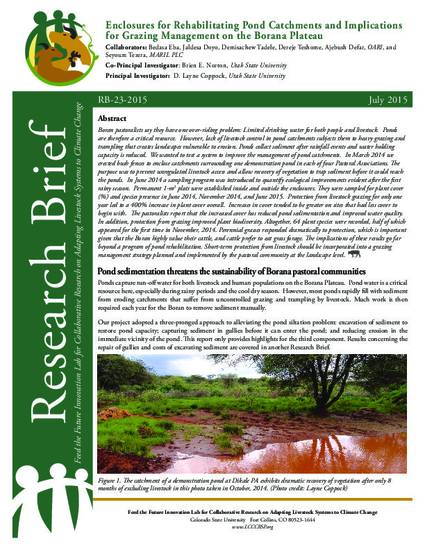
Boran pastoralists say they have one over-riding problem: Limited drinking water for both people and livestock. Ponds are therefore a critical resource. However, lack of livestock control in pond catchments subjects them to heavy grazing and trampling that creates landscapes vulnerable to erosion. Ponds collect sediment after rainfall events and water holding capacity is reduced We wanted to test a system to improve the managements of pond catchments. In March 2014 we erected bush fences to enclose catchments surrounding on demonstration pond in each of four Pastoral Associations. The purpose was to prevent unregulated livestock access and allow recovery of vegetation to trap sediment before it could reach the ponds. In June 2014 a sampling program was introduced to quantify ecological improvements evident after the first rainy season. Permanent 1-m2 plots were established inside and outside the enclosures. They were sampled for plant cover (%) and species presence in June 2014, November 2014, and June 2015. Protection from livestock grazing for only one year led to a 400% increase in plant cover overall. Increases in cover tended to be greater on sites that had less cover to begin with. The pastoralists report that the increased cover has reduced pond sedimentation and improved water quality. In addition, protection from grazing improved plant biodiversity. Altogether, 64 plant species were recorded, half of which appeared for the first time in November, 2014. Perennial grasses responded dramatically to protection, which is important given that the Boran highly value their cattle, and cattle prefer to eat grass forage. The implications of these results go far beyond a program of pond rehabilitation. Short-term protection from livestock should be incorporated into a grazing management strategy planned and implemented by the pastoral community at the landscape level.
